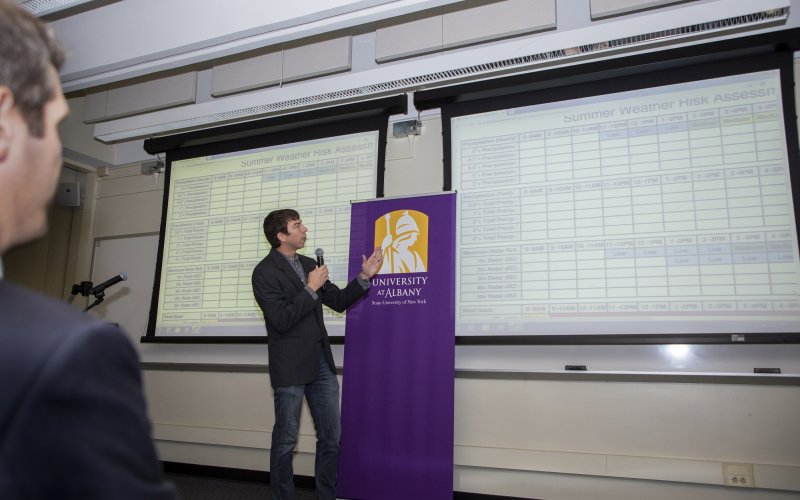New York Budget Offers Major Boost to UAlbany’s Center of Excellence

ALBANY, N.Y. (April 15, 2021) – The University at Albany's efforts to make New York businesses more resilient to severe weather will see a boost in state funding this year.
Funding in the recently adopted state budget for UAlbany's Center of Excellence (COE) in Weather and Climate Analytics increased from $250,000 to $800,000, in turn offering more support for its research projects that are helping New Yorkers navigate increasingly extreme weather events.
The COE has been funded since 2015 in large part due to the advocacy of Senator Neil Breslin and state Assemblymembers Patricia Fahy and John McDonald.
“New York is one of the most weather-vulnerable states in the country, with tens-of-billions of dollars lost every year at the mercy of severe storms,” said Chris Thorncroft, who directs UAlbany’s COE, along with its Atmospheric Sciences Research Center and NYS Mesonet. “Our researchers are developing advanced forecasting-based solutions that empower public and private partners to make better risk-management decisions, which increase New York’s weather resiliency and directly impacts the economy.”
“We are thankful to Gov. Cuomo and our elected officials such as Sens. Breslin and Michelle Hinchey and Assemblymembers Fahy and McDonald for valuing the COE and fighting for this critical boost in support.”
A More Resilient New York
The COE, funded in part through the NYSTAR innovation network, taps into UAlbany’s network of 120-plus atmospheric and environmental scientists, the largest concentration in NYS. It also leverages a massive trove of data from the University’s NYS Mesonet, an advanced network of 126 weather stations located across the state.
Scientists at the COE are solely focused on working with state government and private businesses to create innovative tools that help to better understand and respond to New York’s changing climate.
For example, the COE is currently working with the New York State Energy Research and Development Authority (NYSERDA) to develop customizable forecasting tools that offer electric utility partners with real-time predictions on power outages, electrical load and renewable energy generation. Its scientists are also aiding the state Department of Transportation with forecasting tools to more efficiently remove snow and ice from the highways.
New York’s educational system is benefitting too. Capital Region BOCES partnered with the COE in 2019 to create a weather dashboard that helps with decision-making around class cancellations due to inclement weather.
The state’s increased funding will allow for the exploration of new partnerships, while also freeing up resources to enhance and create more decision-making tools, according to Nick Bassill, a UAlbany meteorologist and the COE’s director of research and development.
“I'm beyond overjoyed that our Center of Excellence has seen its funding raised significantly in the latest New York State budget,” Bassill said. “We've been tasked by the state to work with partners across a number of industries to create smart solutions that help solve their weather-based problems. Luckily, that’s what we enjoy doing.”




